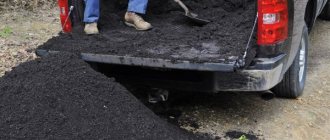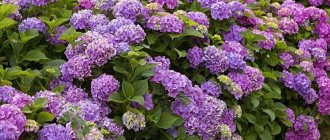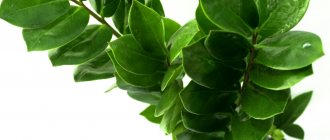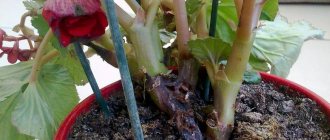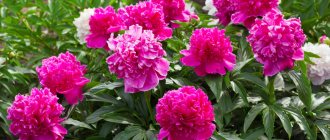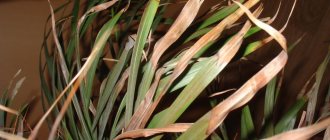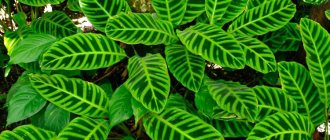Description of culture
Hydrangia appeared in England and France at the beginning of the 14th century and was represented by only 2 species: white and scarlet.
The hydrangea bush can grow up to 3 meters in height, but there is a vine-like species that can reach a length of 30 m.
In Europe, only deciduous hydrangias are grown.
Types of hydrangeas
Grape leaves dry out at the edges and curl
The following plant species are found :
- large-leaved;
- paniculata;
- tree-like;
- creeping.
The flowering period lasts from late spring to late autumn.
There are two types of flowers in inflorescences:
- fertile, or small-bearing;
- sterile or sterile.
Fertile ones are in the center of the inflorescence, and infertile ones are at the edges. Some species have inflorescences containing only fertile flowers. There are two types of inflorescences on a hydrangea bush: paniculate and corymbose.
Hydrangeas are grown with inflorescences of the following colors:
- white;
- blue;
- purple;
- lilac;
- pink;
- red.
The color of the inflorescences depends not only on the variety, but also on the composition of the soil on which the bush grows. On acidic soils, the inflorescences will be blue, on neutral soils (pH 5.5) - beige, on alkaline soils - pink or lilac. The blue color of hydrangia flowers growing in acidic soil is given by aluminum compounds found in acidic soils.
The hydrangea fruit has the form of a box containing from 2 to 5 separate chambers, each of which contains small seeds.
One of the most popular types of hydrangia is the large-leaved variety, the inflorescences of which have sterile large flowers. About 600 varieties of this shrub have been bred.
Attention! Hydrangea is a poisonous plant, so it is prohibited to use it as food.
Features of cultivation
Why do the leaves of Hydrangea paniculata turn yellow?
Hydrangea grows best in acidic soils. For better penetration of air into the soil, the soil around the bush must be loosened periodically.
Hydrangea does not grow well in sunny areas, so it is better to choose a planting location in shade or partial shade. In a sunny area, the plant develops more slowly and the flowers become smaller.
Watering hydrangia should be done with settled or rainwater, since the shrub does not tolerate lime well. Watering time is morning or evening. This will allow the plant to avoid sunburn. Once a week, at least 2 buckets of water are poured under an adult bush.
Hydrangea propagates by green cuttings.
Planting is usually carried out in the spring when there is no night frost.
2-3 weeks before planting, dig a hole up to 0.5 m deep and with sides up to 0.7 m. Sod, leaf soil, sand and peat are poured into it in equal proportions. It is not recommended to prepare alkaline soil, since its alkalinity is a possible cause of hydrangea chlorosis. Next, mineral fertilizers and organic matter are added to the planting hole. The root collar of the seedling should be at ground level.
Starting from 3-4 years, the bush is molded annually.
Hydrangea turns yellow and dries: causes and correction of care errors
Loading …
Hydrangea is an amazingly beautiful plant that has lush green foliage and colorful inflorescence caps. It can be grown both in the garden and in the apartment. With proper care and favorable conditions, the bush will be healthy and beautiful.
However, sometimes gardeners are faced with the fact that hydrangea leaves begin to turn yellow, dry out or turn black. Why does this happen? And what should you do if you find such a problem in your plant?
The main causes of yellowing of garden hydrangea and their solution
Basically, the reasons why hydrangea leaves turn yellow are errors in care or changes in the environment. But sometimes the plant is damaged by pests. Consider the possible reasons in more detail.
Lack or excess of light and moisture
If the bush grows in the shade or in an open sunny area, its leaves may begin to turn yellow, brown and dry out. The light regime is very important for the plant - it prefers bright, but at the same time diffused lighting.
He will also be comfortable in partial shade from trees or near bushes. The scorching sun causes burns on the leaves , and the lack of light affects both foliage and flowering.
If yellowing is due to improper lighting, the hydrangea should either create suitable conditions or transplant it to another place.
Although hydrangea is a moisture-loving plant, severe waterlogging primarily affects the leaves. They begin to turn yellow and then fall off. If this happens, it is important to reduce the frequency and volume of watering and not to overwater the plant in the future.
Drafts
Hydrangea is a heat-loving flower, so sudden changes in temperature and constant drafts at the site of its planting will lead to yellowing of the leaves and withering of the entire bush.
If this is the reason for the yellowing, the flower should be transplanted to a windless, sunny place. It is important that the soil in the new location is suitable.
It is very important to choose the right place when planting a plant; think about this in advance.
Low soil acidity
Hydrangea prefers acidic soil, pH 3-6. If it grows in alkaline soil, yellow leaves may begin to appear.
If this is the case, then periodically add lemon juice to the water for irrigation in the proportion of 2-3 drops of juice per 1 liter of water.
You can also replace lemon juice with vinegar essence. In this case, the ratio will be: 1 teaspoon of essence per 10 liters of water. Over time, the soil loses its nutrients, and the plant also needs to be fertilized.
Nutritional deficiencies
One of the reasons for the appearance of yellow foliage on a plant may be a lack of fertilizer. From early spring to mid-summer, it needs regular feeding: 2 times a month with mineral fertilizers and 1 time with organic fertilizers.
If your hydrangea begins to turn yellow due to a lack of micro- and macroelements, feed it in the spring with fertilizer with a high nitrogen content for active growth of foliage, in the summer with “Kemira flower” for abundant flowering, in the fall with potassium-phosphorus fertilizers to prepare for the dormant period and laying of young shoots and peduncles.
Powdery mildew
Yellowing of leaves can be caused by this disease. It can be identified by a grayish coating on the back of the leaves. Yellow-green spots appear on the front side, which turn brown over time and acquire clear boundaries.
Fungicides, for example, Alirin or Fitosporin, will help cope with the disease. At advanced stages, Thiovit, Skor, Topaz, Jet are used.
Now you know why garden hydrangea leaves turn yellow and what to do with the plant if there are care errors.
Hydrangea leaves are drying up
Possible reasons why hydrangea leaves dry and what to do with the plant:
- Lack of moisture. The plant requires regular, abundant watering, as it loves moisture very much. Due to overdrying of the roots, the leaves begin to dry out, especially if the bush grows in a sunny place. The solution to the problem will be timely watering in sufficient quantities and shading of the plant;
- Incorrect transplant. If the roots, which absorb water and nutrients, are damaged during transplantation, the hydrangea grows poorly and the tips of the leaves begin to dry out. In this case, the flower needs regular, abundant (but not excessive) watering. Once every 10 days, when the soil is moistened, the Zircon preparation is added to the water (diluted according to the instructions). It stimulates root formation. Feeding is carried out only after the bush begins to grow;
- Low environmental humidity . This often happens in enclosed spaces, such as greenhouses. It is important to regularly ventilate and moisten the air around the bush;
- Lack of nutrients. It is especially felt during the formation of buds and flowering. During this period, fertilizing should be done once every 7-10 days.
Hydrangea leaves turn black
Blackening of leaves can be dry and wet, or flaccid. In the first case, brown spots form along the edges of the leaves, which subsequently cause the foliage to dry out and wilt. The reason why hydrangea leaves turn black and dry may be:
- Sunburn. It is important to protect the plant from the scorching rays of the sun;
- Hard water for irrigation. Regular tap water may contain lime and other impurities. Therefore, before watering, it is important to stand for at least a day. It is better to do this in the sun so that the water also warms up.
Wet blackening is easily identified by limp dark leaves. Its reasons may be:
- Drafts or sudden temperature changes;
- Excessive abundant watering;
- Heavy soil that retains moisture and does not allow air to pass through well. Hydrangea prefers light, loose, nutritious soil.
Why do the leaves of Hydrangea paniculata turn yellow?
Hydrangea paniculata, with its beautiful pyramidal inflorescences and flowering until the coldest weather, may also begin to turn yellow leaves. The reason, as a rule, lies in an excess or lack of something , for example:
- Excess or lack of light;
- Overwatering;
- Lack of nutrients;
- Low soil acidity;
- Drafts and sudden temperature changes;
- Diseases such as powdery mildew and ring spot.
To solve the problem of yellowing, it is necessary to adjust care and create the most favorable conditions for hydrangea.
Hydrangea turns yellow and dries at home
Indoor hydrangea is adapted to apartment life, so it especially needs the creation of comfortable conditions for growth and flowering. Sometimes, if the rules of care are not followed, the leaves of the flower may begin to turn yellow and dry out . What could be the reason?
- Damage to the root system during transplantation. In this case, the plant will most likely recover, but it will take time - up to 2 months. You can help him with this by adding Zircon to the water for irrigation every 10 days. It stimulates root formation;
- Insufficient or excessive watering. It is optimal to carry out the next moistening after the top layer of soil in the pot has dried a little;
- Low air humidity. Hydrangea should be sprayed regularly, especially on hot summer days. It is also important to ensure that the humidity in the room where it is located is above average;
- Lack of nutrients. During the period of active growth and flowering, potted hydrangea needs regular feeding: once every 7-10 days;
- Excess light. On a south-facing window without shading, hydrangea can get leaf burn. The optimal place for it is eastern and western windows.
You can read more about caring for hydrangea at home here.
Knowing the causes of yellowing, blackening and drying of hydrangea leaves, you can avoid unnecessary problems. Well, if trouble does happen, tips on quick help will help restore the lushness of green foliage in a short time!
Source: https://dom-florista.ru/rasteniya/dekorativnocvetushhie/gortenziya/gortenziya-zhelteet.html
Why does hydrangea wither?
If the shrub is properly cared for, it will look luxurious throughout the entire growing season. If the technology for growing the plant is not followed, hydrangia may become ill.
What to do if hydrangea dries out
Quince diseases: leaves dry out
First you need to determine the cause of the disease. If the leaf dries, then the reasons for this may be:
- incorrect soil pH;
- direct sunlight;
- watering the plant with hard tap water;
- lack of moisture in the soil;
- insufficient or excessive amounts of microelements in the soil.
Incorrect soil composition
In order for the shrub to develop well, an important condition must be met - the soil can be acidic or moderately acidic. For hydrangea, the pH should be between 4.0-6.0. In the case of alkaline soil, the leaf will begin to dry out over the entire area.
Attention! The color of the plant's leaves depends on the acidity of the soil. The more acidic it is, the darker the hydrangea leaves.
If the soil is alkaline, then the acidity of the soil can be restored by watering with acidified water (for example, with the addition of lemon juice).
Insufficient plant nutrition
If the leaves turn black or yellow, the soil may not have enough iron or nitrogen.
During the flowering period, it is necessary to feed the hydrangea with a complex fertilizer intended for flower plants.
Also, a lack of microelements can occur in the spring, when hydrangea begins to actively develop. How to revive hydrangea in this case? To do this, you need to foliar feed the bush with iron chelate.
However, hydrangia responds poorly not only to a lack of fertilizers, but also to an excess of fertilizers. Therefore, after flowering is completed, it is necessary to reduce the dose of applied mineral fertilizers.
Excessive sunlight
One of the reasons why hydrangea leaves dry out is that the plant is not in the shade, but in the sun.
Hydrangea does not develop well in direct sunlight. Therefore, resuscitation consists of transplanting the plant into partial shade or creating artificial shade using a special shading mesh.
If the bush is domestic and grows indoors, then it is best to place the pot on a western or eastern window. You also need to make sure that the leaf does not touch the window glass. If the sheet touches the glass, the sun can burn it.
This is interesting: How to prepare nettle fertilizer for plant nutrition
Insufficiently moist soil
Due to lack of moisture, the leaves of the bush will dry out over time.
Hydrangia is a moisture-loving plant, so regular watering will ensure beautiful flowers.
Increasing watering and mulching the soil will allow the street bush to be revived. If the bush is indoors, then you can use a humidifier. Instead, you can install a container near the flower into which water is periodically poured.
However, the plant also does not like excess moisture, as this contributes to the development of root rot.
Using hard water for irrigation
Tap water contains many impurities, including lime. And hydrangea is quite sensitive to them. Therefore, it is best to use settled water for irrigation. To do this, you can use special open containers, which are best placed in the sun. In this case, you can get warm and soft water for irrigation.
How to feed hydrangea when the leaves dry out
If hydrangeas were fertilized regularly, in the required volumes and at the recommended time, then additional stimulation is unlikely to improve their well-being. Fertilizer application is indicated if there is a clear lag in shoot growth and pale foliage color. In this case, it is more advisable to use special fertilizers for hydrangeas, azaleas and rhododendrons.
Many complex fertilizers are developed specifically for hydrangeas.
They contain a complete set of microelements necessary for the plant. They are used in accordance with the instructions.
Errors during landing
One of the reasons why hydrangea leaves dry around the edges is mistakes that were made when planting the plant.
Damage to the root system
Hydrangea has a very delicate root system, so replanting the plant must be done very carefully, without damaging the small roots. Damage to them can lead to the fact that the bush will be difficult to take root and will hurt for a long time.
Attention! Buying a seedling is a very responsible matter. It is important to check the condition of the root system.
Also, do not cut the roots when planting. Roots should only be pruned if they are rotten, diseased, or damaged by insects. Rotten roots are dark brown, while healthy ones are white. The cut areas are treated with crushed activated carbon.
Better survival of the plant can be helped by watering with the addition of Zircon, which is performed once a week.
Mistakes when choosing a landing site
If the soil is not acidic, but alkaline or neutral, then the plant will have difficulty taking root. Therefore, in this case it is necessary to acidify the soil, otherwise the bush may dry out.
If a garden is chosen for planting, it is important not to place the seedling in a draft; it is also necessary to protect it from sudden temperature changes and hypothermia.
Why do the edges of the leaves of garden or home hydrangea dry, wither and turn black?
Lush hydrangea bushes can suffer from a number of diseases. In this case, the affected crop may lose its decorative properties. Its leaves often dry out and its flowers wither. To cope with the problem, you need to understand why hydrangea leaves dry at the edges. This will help you take the right measures in time.
Why do garden or indoor hydrangeas have dry leaves around the edges?
Any external changes in the condition of the plant indicate improper care. There are quite a few reasons for problems. If you find out as quickly as possible why the leaves of garden hydrangea are withering, you can have time to save the plant.
Hydrangea blooms profusely
Insufficient soil moisture
Leaves may dry out due to lack of moisture. All varieties of hydrangea - tree-like, large-leaved, paniculate - are considered moisture-loving. Therefore, they must be watered systematically.
To revive outdoor culture, it is worth increasing the amount of watering and using soil mulching. When growing bushes at home, you need to use a humidifier. A container of water, which should be placed near the pot, will also help save the plant.
Important! It is not recommended to water the plant too much. This provokes the development of root rot.
Excessive soil moisture
Due to excessive soil moisture, leaves may dry out and fall off. Roots that receive a lot of moisture rot and die. As a result, leaves that do not receive nutrition may curl and fall off.
How to revive hydrangea in this case? When growing a bush at home, you must carefully remove it from the pot and carefully cut off the affected root fragments. They are brown in color. Treated areas should be sprinkled with activated carbon.
Then the plant should be transplanted into a new container. It should be smaller than the previous one. Then cover the flower with a greenhouse for 1-2 weeks.
Important! It is necessary to provide ventilation, for example, periodically open the plant so that it can breathe.
Low air humidity
When answering the question why hydrangea withers, one cannot help but mention the increased dryness of the air. This moisture-loving crop can hardly tolerate it. When growing in the garden, hydrangea should be sprayed as often as possible. At night you can create a small greenhouse for the flower.
In low humidity conditions there is a risk of dry leaves
When growing crops indoors, it is worth humidifying the air using a special device.
Excessive lighting
One of the reasons why the edges of hydrangea leaves dry out is that the bush is located in a place that is too sunny. The bush develops poorly under direct rays. Therefore, resuscitation of the plant consists of moving it to partial shade or using a special shading net. When growing hydrangea in an apartment, it should be placed on an eastern or western windowsill.
Important! When growing crops on a windowsill, you should avoid leaving the leaves touching the window. This may cause the plant to burn.
Hypothermia
Hydrangea is a heat-loving crop. It is not recommended to plant it in regions with a cool climate, which is accompanied by sudden changes in weather conditions. Sudden temperature fluctuations and strong winds cause hydrangea leaves to dry out and turn black. In this case, the bush begins to gradually wither and disappear.
To cope with the problem, you need to provide the flower with optimal temperature conditions. It should be 20-23 °C. If the hydrangea is grown in unprotected soil, it needs to be moved into a large pot and brought into the house.
Heavy or compact soil
If hydrangea is grown, the leaves turn black and dry out due to the incorrect composition of the soil. The culture needs light and loose soil. It should be quite nutritious.
Clay soil does not allow moisture to be removed normally and impairs oxygen circulation around the roots. In such a situation, the bush will experience a lack of nutrients and gradually dry out.
Problems with the plant can occur if the soil is chosen incorrectly.
Increased or decreased soil acidity
For the full development of the culture, optimal acidity parameters are required. They should be 4-6 pH. If the soil is alkaline, the leaves will begin to take on a light shade and dry out.
Important! To increase soil acidity parameters, it is recommended to use acidified water. Experienced gardeners use citric acid for this purpose.
Lack of microelements
Leaves may turn yellow or darken due to a lack of nitrogen or iron in the soil. To avoid such problems, starting in March, the bush needs to be watered with nitrogen agents. At the stage of bud formation, potassium, iron and phosphorus are used. When preparing for winter, potassium-phosphorus products are used.
Watering with hard water
Another reason why garden hydrangea withers is the use of hard water for irrigation. It contains a large number of impurities, including lime. At the same time, hydrangea is highly sensitive to them. Therefore, it is recommended to use settled water for irrigation.
Dry leaves may be due to improper watering
It is advisable to collect the liquid in advance in open containers located in the sun. They will help to obtain warm and soft water that can be used for irrigation.
Improper planting or replanting of shrubs
The cause of the problem, due to which the tips of the leaves may turn black, may be a violation of the rules of replanting the crop. In this case, there is a risk of damage to the root system. Also, the plant may die due to the wrong choice of place for planting.
Root damage
The culture has very delicate roots, so it must be replanted extremely carefully. It is important not to damage the small roots, otherwise the bush will be very painful.
When planting, it is not recommended to trim the roots. This procedure is carried out only if there are areas of rotting or damage by parasites. Affected roots are brown in color, while healthy ones are white.
Advice! In order for the plant to take root better, it needs to be watered once a week with a Zircon solution.
Wrong location
It is difficult for the plant to adapt to growing in neutral and alkaline soil. Therefore, it is recommended to acidify the soil, otherwise there is a risk of the bush drying out.
Important! When growing hydrangea in the garden, do not place it in a draft. Protecting the bush from sudden temperature fluctuations and hypothermia is of no small importance.
Causes of blackening of leaves
Why do hydrangea leaves turn red - what to do with the plant
The appearance of blackening of foliage may be associated with the development of various diseases. To choose an effective treatment method, it is necessary to accurately determine the causes.
Dry blackening
Darkening of the tips of the leaves may be due to the use of hard water for irrigation and sunburn. In this case, the leaf blades begin to wither and wither.
Wet blackening
The foliage darkens and loses elasticity due to sudden temperature fluctuations, exposure to drafts, excessive watering, and the use of heavy soil. A fungal infection can also be a provoking factor.
Why do hydrangea inflorescences and flowers dry out?
Anthurium flower - why leaves and flowers turn black and dry
Inflorescences may dry out due to insufficient watering. Calcium spotting is also often a cause of problems. In the first case, it is enough to normalize the moisture of the bushes. However, it will not be possible to get rid of the disease.
Drying branches
Why do hydrangea leaves curl and curl up?
Branches can dry out due to various diseases. The most common cause of problems is rot.
White rot
This infectious disease can lead to the death of the crop. Initially, the root system suffers due to excess moisture. Then the nutrition of the bush is disrupted. As the disease develops, a whitish coating and blackening of the leaves appear on the bushes. Fungicides will help cope with it.
Gray rot
As this disease develops, the flower tissues become soft and die. In a humid environment they become covered with a gray coating. Diseased fragments of the culture must be removed. Then treat the plant with Fundazol or Skor.
Branches may dry out due to the development of fungi
How to save hydrangea if it has dried out
If affected areas appear on the crop, it is necessary to take timely measures. They depend on where the bush lives.
In the garden
First of all, you need to get rid of the affected fragments. If there is rot, the cut should be made along a healthy area. After pruning, the bush should be sprayed with a fungicidal preparation.
In a pot
A houseplant must be brought into the house if it was taken outside for the summer. After which you should cut off the affected fragment and treat the bush with Hom.
When growing hydrangea there is a risk of various problems. To cope with leaf dryness, it is necessary to identify the provoking factor and take timely measures.
Source: https://greensotka.ru/tsvetushchie/pochemu-u-gortenzii-sokhnut-listya-po-krayam.html
Why do the leaves of garden or home hydrangea dry (wither) at the edges?
Amateur gardeners who do not have sufficient experience may wonder why garden hydrangea withers. In fact, any external changes in the condition of the flower signal a violation of the conditions of maintenance and care, by correcting which the situation can be corrected.
Healthy plant bushes will decorate any area
Why do hydrangea inflorescences dry out?
Why do hydrangea leaves turn red - what to do with the plant
Due to violation of planting rules and care conditions, a hydrangea bush may refuse to budding and flowering. Another variant of the problem is that the inflorescences begin to fall off.
The situation can be saved by transplanting to a new, more suitable place and adjusting agricultural technology. In this case, moving the flower from one area to another is carried out together with the root ball, trying not to damage the sensitive roots.
In the garden
In an outdoor hydrangea that has begun to dry out, all non-viable shoots should be removed. If rot appears, the cut must be made along a healthy area, 1 cm below the affected part of the stem. In this case, the instrument must be disinfected after each manipulation, and the wounds are sprinkled with crushed coal.
After pruning, the bush is sprayed with a suitable preparation.
In a pot
Indoor hydrangea, temporarily kept outdoors in the summer, is brought into the house and also cut off. The remaining parts of the bush are sprayed with HOM or the one that corresponds to the identified disease.
Despite its tenderness, hydrangea is a fairly resilient plant. Even if the entire above-ground part of the bush has dried, you should not immediately destroy the plant. When the conditions of care are restored, the bush's dormant axillary buds may awaken, and after a while it will recover.
Source: https://pocvetam.ru/poleznaya-infirmatsiya/bolezni-i-vrediteli/pochemu-u-gortenzii-sokhnut-listya-po-krayam.html
Hydrangea diseases
What to do if hydrangea leaves wither? Perhaps the plant is sick. To choose the right treatment method, it is important to accurately determine the disease.
Dry blackening
If the edges of the leaf are covered with brown spots and become dry, this indicates that:
- the plant is watered with hard water;
- The leaf got sunburn.
Once spots appear, the foliage will wither and wither.
Wet blackening
The leaves darken and lose their elasticity. The reason for this may be:
- sudden changes in temperature;
- exposure to drafts of the place where the bush grows;
- excessive watering;
- heavy soil.
Why is garden hydrangea still withering? A possible reason is a fungal infection of the plant.
White rot
Fungal disease of roots. With this disease, the bush gradually dies, since the affected root system cannot provide the plant with the required amount of nutrients.
Symptoms:
- white, cotton-like coating on shoots;
- blackening of shoots.
Treatment
To treat the affected plant, fungicides Fitosporin, Copper Oxide, etc. are used.
Gray rot
Symptoms:
- The flower tissues become soft and watery;
- The affected parts of the plant die in a dry environment. They leave holes on the stems;
- In a humid environment, the affected areas become covered with a gray coating.
Treatment
Diseased areas are removed mechanically. Then domestic plants are treated with Chistotsvet, Fundazol or Skor. Garden species are treated with Rovral Flo 255 SC every three weeks.
Septoria
Symptoms
The appearance of dark brown spots, up to 6 mm in size, on the leaves. The affected leaves gradually begin to dry out and die.
Treatment
Treatment with copper-containing preparations, for example, copper sulfate.
Powdery mildew
Symptoms
Formation of yellow-green spots on leaves. Gradually the spots darken and acquire a brown color. The back side of the leaf is covered with a purple or gray coating. Winter usually brings death to a sick plant.
Treatment
At the first symptoms of damage, the fungicide Fitosporin is used, and in advanced forms - Skor, Topaz or Chistotsvet.
Thus, when purchasing a seedling through a store or on the market, you need to make sure that the young plant is not susceptible to fungal disease.
Disease Prevention
Checking seedlings and proper plant care are the main prevention of diseases. Be sure to loosen the soil around the plant throughout the growing season.
In the spring, you can treat the plant with copper-containing preparations, for example, copper sulfate (100 grams per 10 liters of water). You can also use drugs Topaz, Fitosporin, etc.
At the end of spring it is necessary to apply nitrogen-containing fertilizers, in the summer – phosphorus-potassium fertilizers, and in the fall – phosphorus fertilizers.
How to revive a bouquet of hydrangeas
The composition may begin to fade prematurely. This occurs due to the proliferation of microbes
in a vase or due to the fact that the flowers
have been without moisture for a long time
. In the first case, change the water and wash the container with soap to remove bacteria. Prune hydrangeas as if you were placing them in a vase for the first time.
If the flowers are dehydrated, more drastic measures will be required. Fill the basin with cold water
, you can add ice there.
First, dip the inflorescences for half an hour, then the plants completely for 2-3 hours
. During this time, their cells will be filled with moisture.
After the specified time, place the flowers in a vase, spray them with a spray bottle and put plastic bags on the inflorescences to create a greenhouse effect so that they absorb the water as completely as possible.
To preserve cut hydrangeas longer, use fertilizer
. The most accessible is “Crysal” - an inexpensive mineral supplement that is sold in florist salons and gardening stores. With proper care and the use of a nutritional supplement, a bouquet of hydrangeas will delight you for a month.
How to save a wilted hydrangea
If the bush is dry, you can try to revive it. If the plant is a garden plant, then in the spring all frozen parts are removed. If the plant is affected by rot, then cutting is performed 1 cm below the affected part. The cut areas must be sprinkled with ash, activated carbon, etc. After trimming each affected area, the pruning shears are disinfected. The bush is treated with drugs, depending on the disease.
How to revive cut hydrangea? If a wilted flower is in a vase, then you need to take it out, cut off the lower part obliquely and place the plant in boiling water for 3-5 minutes. After the air bubbles stop coming out of the stem, you need to take out the plant, cut off the part that was in boiling water, and put the flower in cold water. After this, your vase will look elegant again.
This is interesting: Growing watermelons in central Russia in open ground
Hydrangea dries in a pot at home
If a houseplant begins to disappear, you need to bring it into the house (if the pot was standing outside), cut off the entire affected part and treat it with HOM for fungal infections.
Disinfection of hydrangea
You shouldn’t flood the flowers too much, as the presence of air is important for them. Otherwise, it will take more effort to recover.
That is, free the roots from the ground, wash them, remove the rotten ones and replant them in a new pot.
An important point is wet disinfection. The correct actions to improve the nutrition of hydrangea flowers are to follow the following sequence:
- Prepare a solution of the weakest potassium permanganate in a certain concentration according to classical recipes.
- It is necessary to keep the roots in it for a period of time from 15 to 30 minutes, depending on the degree of blackening of the flowers.
- At the bottom of the pot, place a layer of drainage made of broken brick, expanded clay or polystyrene foam broken into pieces, which is 4 centimeters thick.
- Place some of the soil in the pot, spread the roots on it, then add another layer for better growth and soil density.
- To compact the soil, it is necessary to water well around the existing roots; if necessary, add more soil to strengthen the soil in the pots as much as possible.
The plant must be kept in a cool place in winter, away from heating devices. Watering should be done as rarely as possible.
In this case, the frequency depends on the size and conditions of detention, taking into account the composition of the soil, humidity and temperature. The higher it is, the higher the risk of blackening of the leaves.
Therefore, it is better not to add some water than to overfill it. If underwatered, the plant will have drooping and limp foliage.
And if there is enough water, the foliage will become elastic and greener compared to the standard state. Also, there will be no lumps or harmful organisms in the soil that will affect the flowers for the worse.
If your hydrangea leaves dry out, you need to look for the cause.
Hydrangea is a shrub plant with beautiful large flowers and lush green foliage.
Sometimes, for a number of reasons, hydrangea leaves dry out. This development of events upsets and makes both the amateur gardener and the experienced landscape designer nervous. But don’t despair: having determined the cause, you can choose the right way to solve the problem. The flower belongs to moisture-loving plants. This applies not only to watering, but also to air humidity. In an arid climate, hydrangea will not be able to survive and delight the eye with those charming flowers for which it is valued.
In addition to changing the color of the flowers, hydrangea has very sensitive leaves. They respond to soil quality and moisture. Leaves may wither, dry out and fall off. What to do if hydrangea leaves dry out? How to save a plant? Read on for answers to these and other questions.
Why does indoor hydrangea dry out?
Due to its active development and garden origin, large-leaved hydrangea is recommended to be replanted annually in new soil after flowering, with the obligatory loosening of the root ball. Very often, as a result of replanting, the tips of the leaves of a perennial begin to dry out. There can be many reasons for this phenomenon, but in most cases it is:
1. Injury to root hairs during transplantation, which is why the bush simply “sicks.”
2. Wrong choice of soil mixture.
3. The wrong size pot.
You may be interested in an article about how and with what to highlight petunia seedlings.
You can read an interesting article with tips on growing Petunia Gioconda cascade here.
We suggest reading an article describing Ramblin petunia.
In addition, there are several other reasons not related to plant transplantation, as a result of which the leaves begin to dry out. These include:
1. Insufficient watering and spraying.
2. Dry indoor air.
3. Lack of microelements in the soil.
4. Incorrect lighting.
It is worth considering each of the reasons separately to find out why the leaves of indoor hydrangea dry out.
Why do hydrangea leaves dry out?
A common problem with indoor hydrangeas is the leaves drying out. As a result, it does not develop, withers like a plant and does not produce large luxurious flowers. There are several reasons why this process may occur.
Dry soil
The first reason why hydrangea leaves dry out is overdried roots. The flower loves moist soil and requires compliance with the watering regime. It is also worth considering the time of watering and lighting of the plant. In order to save a hydrangea whose leaves and flowers are drying, water it on time, introduce spraying into the care system and darken the flower a little for a while.
Sloppy transplant
Due to incorrect actions, the root system is disrupted. Hydrangea may dry out and wither after transplantation, during which the small roots were disturbed. They are the ones responsible for feeding the plant. To avoid problems with leaves and flowers, replant the flower in the spring. Do not destroy the earthen lump, but transfer it to a new large pot. Choose slightly acidic and loose soil. Deepen the neck of the plant a couple of centimeters, but no more. By observing these conditions, you will not need to save a hydrangea whose leaves are drying.
Excessive soil moisture
Waterlogging of the soil is also one of the reasons for leaf fall.
At first glance, a flower that loves moisture cannot dry out due to constant watering. But that's not true. Since the root system, especially the small one, is responsible for feeding the flower, its waterlogging can negatively affect the condition of the foliage. Roots that receive too much moisture simply begin to rot and die. As a result, the leaves do not receive nutrition and fall off. In order to revive a hydrangea in a pot with diseased roots, carefully remove the plant and cut off the rotten roots. They will be brown. Sprinkle the cut areas with activated carbon. Transplant the flower into a new pot, which will be smaller in size than the previous one. You can also cover the flower with a portable compact greenhouse for a week or two. Also consider ventilation in this design.
Low air humidity
It is very difficult for a plant that loves moisture to survive dry air. Therefore, the tips of its leaves begin to dry out, then the entire leaf dries out and falls off. What to do if hydrangea dries out in a dry climate or greenhouse? In open ground - spray the plant as often as possible. At night, you can create a small stationary greenhouse for hydrangea. It is easier to revive large-leaved hydrangea, which is grown in a greenhouse. It is recommended to humidify the air using a humidifier. It is also worth ventilating the greenhouse as often as possible.
It is worth noting that hydrangea is a flower sensitive to soil pH. If the soil is within the normal range for the plant, the flowers change color. For example, in neutral soil, hydrangea flowers become beige or white, in acidic soil - red, and in alkaline soil - blue or purple. If the soil goes beyond the comfortable pH for the flower, it begins to act up and get sick.
Homemade hydrangea has begun to dry out, what to do?
If a houseplant gets sick while on the site, it returns home, all affected areas are removed and the bush is treated with a home plant. A darkened plant with completely dried leaves must continue to be watered abundantly. The fact is that the buds can recover and then the plant will again begin to delight with its beauty. In this article, we talked about the reasons why leaves can dry out and how to deal with them. Perhaps by obtaining this information, you will be able to avoid such unpleasant moments.
Hydrangea leaves wither - reasons and solution
We carefully examine the plant and look for the cause in order to provide proper assistance to the plant.
This is interesting: How to grow purslane in open ground
Excessive moisture
Abundant and frequent watering of the flower, too high air humidity can also harm the hydrangea and cause damage to the condition of the roots and leaves. Accordingly, if the foliage-root system is disrupted, the plant will not be able to form normal flower stalks and delight with abundant color. If a hydrangea in a pot begins to fade, the first thing you need to do is replant it. Replace the old earthen ball, but not completely. Remember that the root system, especially young ones, is very sensitive and can easily be injured. Transfer the plant to new soil and a new pot. Reduce air humidity levels. Ventilate the room as often as possible, but at the same time protect the hydrangea from drafts.
Temperature changes, drafts
Frequent and sudden changes in temperature and the presence of drafts harm such a delicate plant as hydrangea. Temperature changes (night and day shifts) cause hydrangea leaves to turn black and dry out. To resuscitate a flower, normalize the air temperature. Try to achieve +20-23 degrees. This indicator is considered comfortable for hydrangea. If the leaves are severely wilted, some of them can be cut off.
If your beauty does not bloom, and you still do not lose hope of contemplating these lovely bouquets of flowers, give your hydrangeas a period of rest. This means that it is necessary to reduce the temperature to +10-13 degrees.
In this case, it is necessary to reduce watering to a minimum - just make sure that the flower does not dry out. Also, during the dormant period, the plant must be hidden in a dark and secluded place. In just a couple of weeks, small flower stalks will appear on the hydrangea, which will delight you with beautiful and lush flowers.
Heavy and dense soil
Pay attention to the consistency of the soil in which you plant the flower. Hydrangea needs loose, light and at the same time nutritious soil. Heavy and dense soil will retain moisture and, as a result, the flower will not be able to feed and “breathe” normally.
Please note that garden hydrangea is especially picky about the composition of the soil. In addition to the incorrect density of the earth, the level and balance of micro- and macroelements is also important for it. By violating these wishes of the flower, the leaves of the garden hydrangea may begin to wither and then fall off.
Causes of leaf wilting
It is quite common for hydrangea leaves to wilt. This may be due to drafts or poor soil composition .
Planting near tall plants or barriers will help solve the problem. You also need to be careful when choosing a seat . If the soil does not meet the requirements of the flower, then it needs to be prepared.
Also find out what to do if your hydrangea leaves turn yellow.
Drafts
If the hydrangea is often exposed to drafts, then very soon the leaves will wither and dry out. Many gardeners make the mistake of not taking this feature of the flower into account. As a result, the site becomes less attractive.
To protect bushes from drafts or strong gusts of wind, it is recommended to plant plants next to barriers or buildings . Alternatively, planting can be done next to tall shrubs. If you are growing tall varieties of hydrangea, tie the plants to a support when planting. It will protect the bushes from crown deformation.
Bad soil
Hydrangea prefers to grow on loose, light and nutritious soils . If you plant seedlings in heavy or dense soil, moisture will be retained inside the soil. This leads to the fact that the flower begins to “suffocate” and disappear.
Also consider the composition of the soil in which you will plant garden hydrangea. Soil acidity should be no more than 7 pH . Preliminarily study the composition of the soil to prepare it for the planting procedure. If this is not done, then the death of the hydrangea cannot be avoided.
We advise you to find out what kind of soil is needed for planting garden hydrangea.
Special substances will help eliminate the problem with poor soil . If the acidity is too high, add wood ash (500 g per 1 m²). Peat and sand (10 kg of each substance) will help make the soil looser. The entire volume is distributed over 1 m². If the acidity of the soil is low, you need to add lemon juice to the water for irrigation (5 drops per 1 liter). Carry out the procedure within 5 days.
Temperature changes
If hydrangea is subjected to frequent changes in temperature (night and day), then the ends of the leaf blade turn black and die . To restore the appearance of the crown, you will need to normalize the temperature regime.
The optimal temperature is from +20 to +23°C . If most of the foliage has already deteriorated, then you need to trim off the affected areas.
Important! If the hydrangea does not bloom, then you need to create conditions for its dormancy. To do this, reduce the temperature to +13°C for 10 days.
Why do hydrangea leaves turn yellow?
Dry hydrangea leaves are sometimes accompanied by yellow or black spots. In addition to improper care and the fact that yellow leaves spoil the appearance, they can be a sign of a disease in the plant:
- Watering with hard tap water. Yellowing leaves that still retain green veins are a sign of a disease called chlorosis. This occurs due to watering the plant with water high in lime. The latter accumulates in the soil and increases the level of alkali in it to critical levels. The plant stops feeding and its leaves turn yellow. In order to revive the flower, it should be transplanted into fresh soil. After that, the hydrangea is watered with soft water, which can be boiled and left to stand before.
- Low soil acidity can cause yellow leaves to appear. A reason that can be easily eliminated and does not have a detrimental effect on the flower itself. To eliminate this effect, you need to add a couple of drops of lemon juice per liter of water during watering. Repeat the procedure for several days in a row.
- Abundance of sunshine. Hydrangea loves sunlight, but not direct light. If you plant a flower in open ground and do not provide it with partial shade, it may begin to disappear.
It is better to place the plant near fruit trees or near bushes. This way you can avoid burns on the leaves from direct sunlight and the death of the tree hydrangea. After all, it is the plant that is best suited for planting in the ground in our climate.
- Lack of microelements in the soil. Leaves may turn yellow, lose color and turn black due to a lack of iron and nitrogen in the soil. This phenomenon is often observed during the period of active plant growth (spring). Reanimation of hydrangea that has turned black and/or yellow after winter is carried out by foliar feeding with microelements or iron chelate.
Leaf diseases
They occupy a leading number among all diseases.
Why do hydrangea leaves turn yellow?
- Yellowing foliage may indicate excess moisture. Although hydrangea loves frequent and abundant watering, if there is excessive accumulation of water, it loses its attractiveness.
- Pay attention to the acidity of the soil. If it is reduced, you can add a few drops of lemon juice per liter of water during watering. Repeat the procedure several times.
- Protect the bush from drafts, hypothermia, and sudden temperature changes.
- Do not plant the flower in open sunny areas (what are the rules for planting and care in open ground?). He will be comfortable in the partial shade of large fruit trees or next to spreading bushes. If it is on the sunny side, try to create diffused lighting conditions.
- Yellowing of foliage can occur due to a lack of nutrients. Fertilize regularly.
- Look at the leaves. If a grayish coating appears on them in the form of spots, it may be infected with powdery mildew. Insecticide treatment will be required.
Hydrangea leaves are drying up, what should I do?
- Lack of moisture, especially in dry summers.
- Dry air. This is often encountered when growing in closed or semi-open greenhouses. It is recommended, if possible, to ventilate the greenhouse, install a humidifier, and spray the air.
- Sometimes the tips of the leaves begin to dry after improper replanting, during which the roots were damaged. Even if you followed the rules, no one is safe from an accidental mistake. You will have to be patient and get to work. Treatment with zircon will be required every 10 days. It may take up to 2 months to restore health and strength.
- Lack of nutrients also affects health, especially during the formation of inflorescences and flowering. Fertilizers should be applied at least once every 7-9 days.
Why do hydrangea leaves turn black?
First, the gardener needs to understand whether he is dealing with dull or dry blackening. Each case has its own reasons and ways to improve the health of the plant.
How to deal with dry blackening?
In the case of dry blackening, large brownish spots form along the edges of the leaves, they become dry and wither. Causes:
- Sunburn. Protect bushes from direct sunlight. This applies both when grown in a greenhouse and in an open area.
- Excessively hard water for irrigation. Gardeners often take cold water from the pump. But in many areas it contains lime and other impurities. Be sure to let it sit before watering. Place large tubs on the site and fill them in the morning or evening. It is better to place it in a sunny area so that the water has time to warm up during the day.
How to deal with flaccid (wet) blackening?
It is not difficult to distinguish it by its dark and limp leaves. Causes:
- Excessive and abundant hydration.
- Drafts, sudden temperature changes, too cold summers. In the latter case, you can protect the root system with a layer of mulch.
- Pay attention to the composition of the earth. Plant the flower in loose, light, nutritious soil. Heavy soil retains moisture and interferes with breathing and nutrition.
Chlorosis
Occurs due to iron deficiency. Characterized by impaired chlorophyll formation. The plates turn yellow, but the veins remain green. There may be a lack of iron in the soil, or the flower itself, for physiological reasons, has lost the ability to absorb the mineral.
Why do hydrangea leaves curl?
A separate problem when growing hydrangea is leaf curling.
For some gardeners, this question remains open. As practice shows, there are 2 reasons for this flower behavior: pest damage (aphids, mites) and viral infection. First, to understand the reason why hydrangea leaves curl, inspect the plant and rule out the presence of pests. To do this, inspect the sheets from the inside. If you find unwanted guests, start destroying them with drugs.
If the flower turns out to be clean, it means that the reason for the curling lies in a viral infection of the plant. In this case, the fight for a healthy plant should be aimed at restoring its immunity.
By following all the rules for caring for such a whimsical flower, it will very quickly delight you with luxurious flowers!


